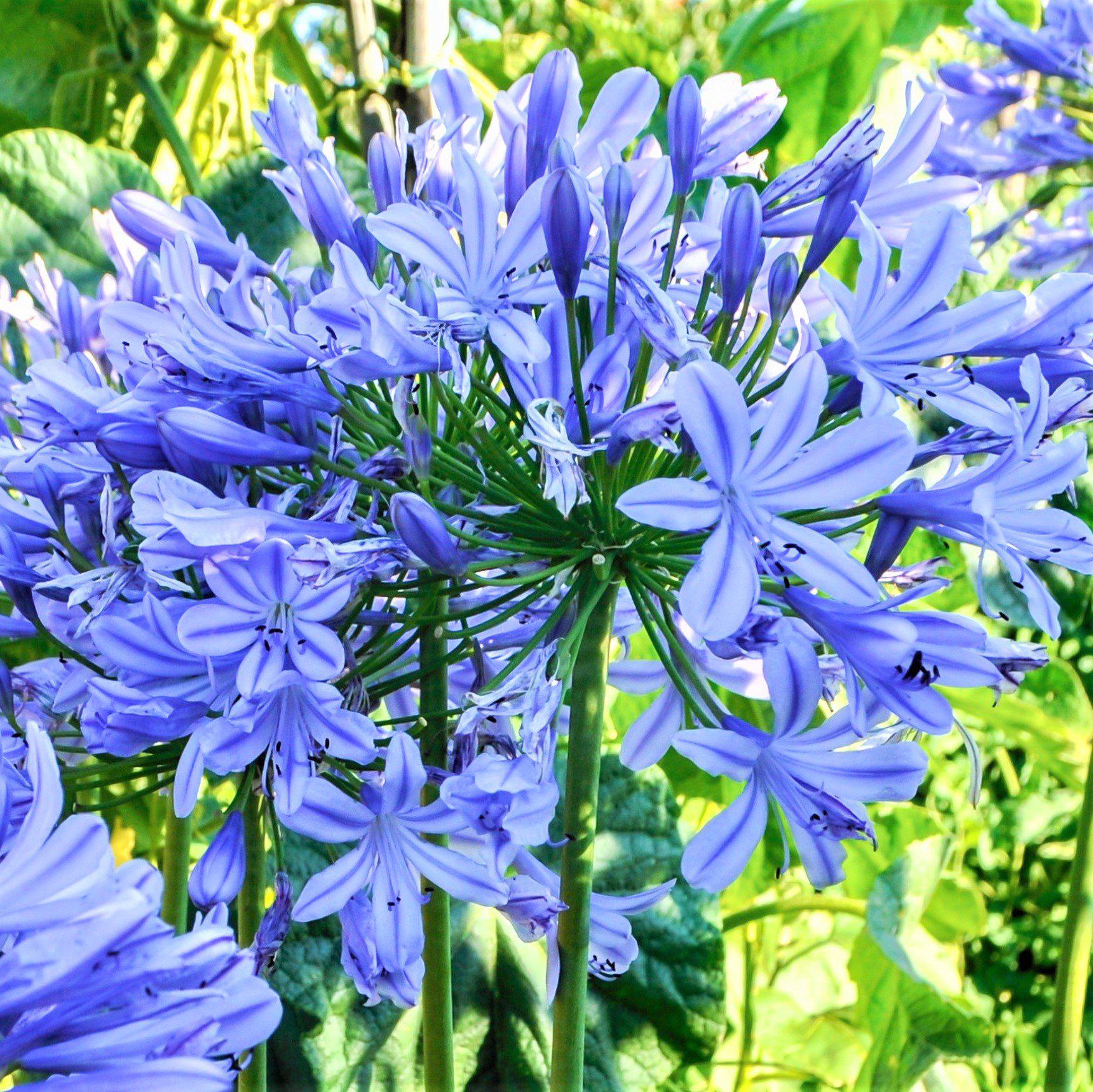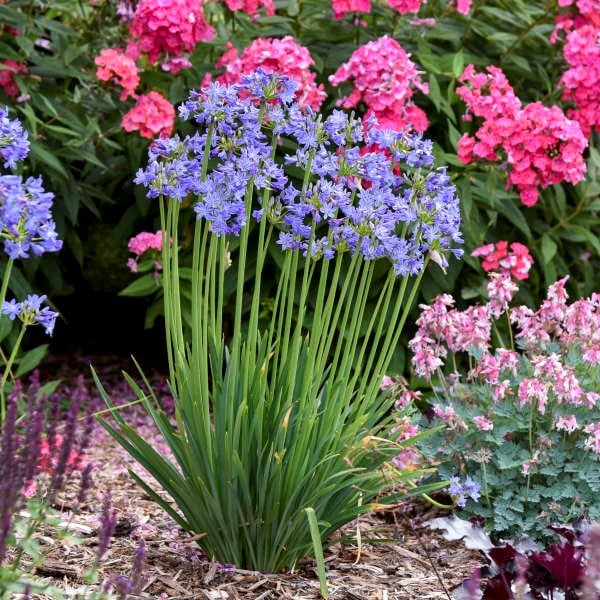Just how to Plant and Maintain Agapanthus in Your Yard
Just how to Plant and Maintain Agapanthus in Your Yard
Blog Article
Letting Loose the Secret to Successful Agapanthus Farming: Advice for a Flourishing Garden
In the realm of gardening, growing agapanthus successfully calls for a tactical technique that encompasses various elements of plant care. With cautious attention to information, one can unlock the tricks to supporting these stunning blooms, resulting in a garden that prospers with charm and vibrancy. By recognizing the nuances of agapanthus growing, one can create an atmosphere where these plants grow and flower perfectly. In the following conversation, we will check out essential suggestions and methods that will direct you in the direction of a thriving agapanthus yard, offering insights into ideal practices, soil problems, sprinkling techniques, and much more.
Growing Agapanthus: Best Practices
When growing Agapanthus, correct soil preparation is vital for making sure successful development and growth of these gorgeous flowers. Agapanthus, frequently recognized as Lily of the Nile or African lily, grows in well-draining soil with a slightly acidic to neutral pH level - Agapanthus. Before planting, it is essential to change heavy clay soils with raw material such as compost or peat moss to improve drainage and offer vital nutrients for the plants
To grow Agapanthus, pick an area that receives complete sunlight to partial shade, as this will promote healthy development and bountiful blooming. Dig an opening twice the diameter of the plant's origin round and put the Agapanthus at the exact same deepness it was formerly expanding. Delicately backfill the opening with dirt, pushing down securely to eliminate any type of air pockets around the roots.
Water the recently grown Agapanthus completely and remain to keep the soil evenly wet, specifically during the plant's energetic growing period. Agapanthus. Applying a balanced plant food once a month can better support the plant's development and flowering. By following these finest methods for planting Agapanthus, you can develop a magnificent display screen of these exciting blossoms in your yard
Suitable Soil Conditions for Agapanthus
For optimum development and flowering success of Agapanthus plants, ensuring the soil problems are excellent is vital. Agapanthus prospers in well-draining soil with a somewhat acidic to neutral pH degree ranging from 6.0 to 7.0. This sort of dirt enables for appropriate water drainage, preventing waterlogging which can bring about root rot. To improve soil water drainage, think about including raw material such as garden compost or peat moss when preparing the planting website. Furthermore, Agapanthus prefers dirt that is rich in nutrients, so including a balanced plant food during the expanding season can advertise healthy development and dynamic blossoms.

Watering and Fertilizing Tips
To make sure healthy try this and balanced development and vivid blossoms, correct watering and fertilizing techniques are vital for successful Agapanthus growing. Agapanthus plants take advantage of routine watering, particularly throughout the growing season. It is advised to water deeply as soon as a week, making certain the dirt is damp however not waterlogged. Throughout hot climate or in pots, more constant watering may be necessary to avoid the soil from drying out completely.
When it comes to feeding Agapanthus, a well balanced plant food with equal parts nitrogen, phosphorus, and potassium can be applied in the springtime to advertise healthy growth and blooming. Slow-release plant foods are optimal for offering nutrients progressively over a prolonged duration. Prevent over-fertilizing, as this can result in excessive vegetation growth at the expense of blossoms.
Furthermore, including raw material like garden compost right into the soil can boost nutrient degrees and improve dirt structure, aiding in the total health and wellness of the Agapanthus plants. By following these watering and fertilizing suggestions, gardeners can ensure their Agapanthus try this plants thrive and generate sensational displays of blossoms.
Pruning and Deadheading Strategies
Appropriate pruning and deadheading methods play an important duty in preserving the health and appearances of Agapanthus plants, matching the essential techniques of watering and fertilizing for effective farming. Pruning Agapanthus includes getting rid of invested flower heads, yellowing or dead fallen leaves, and overall shaping of the plant to promote much better development. Deadheading, the procedure of removing discolored flowers, not only boosts the plant's appearance however also motivates more growing.
When deadheading Agapanthus, it is recommended to clip off the blossom stem at the base using sharp, clean shears. This process redirects the plant's energy from seed manufacturing back into root and vegetation development, promoting a much healthier and more robust plant. Normal deadheading can extend the flowering duration of Agapanthus and prevent self-seeding, which can cause congestion.
In terms of pruning, Agapanthus generally gain from a light trim after blooming to clean up the plant and motivate fresh development. Cutting down the invested flower stems and eliminating any type of dead or damaged foliage aids keep the plant's vigor and overall appearance. Nevertheless, it is necessary to avoid cutting into the crown of the plant, as this can deteriorate its wellness.

Protecting Agapanthus From Pests and Diseases
Carrying out reliable parasite and condition monitoring approaches is critical to safeguarding the health and vigor of Agapanthus plants in farming. Agapanthus are usually durable plants, yet they can still drop target to different bugs and conditions otherwise appropriately taken care of. One typical insect that affects Agapanthus is the Agapanthus borer, a caterpillar that tunnels into the plant, creating damages to the fallen leaves and flowers. To stop problems, normal assessment of the plants is necessary. If borers are found, they can be by hand removed, or insecticidal soap can be used as a control action.
In addition to parasites, Agapanthus are susceptible to illness such as origin rot and fungal leaf spots. By remaining cautious and attending to parasite and condition concerns promptly, garden enthusiasts can aid their Agapanthus flourish and grow.

Final Thought
To conclude, successful growing of agapanthus needs correct growing methods, perfect dirt problems, appropriate watering and feeding, regular pruning and deadheading, and security from conditions and pests. By adhering to these tips and our website techniques, gardeners can make certain a prospering garden loaded with gorgeous agapanthus blossoms. Agapanthus. Keep in mind to maintain constant treatment and focus to information to promote the health and durability of these magnificent plants
When growing Agapanthus, appropriate soil preparation is vital for making certain effective development and growth of these stunning flowers.Water the recently grown Agapanthus extensively and proceed to maintain the soil evenly wet, especially throughout the plant's energetic growing season.For optimum development and flowering success of Agapanthus plants, guaranteeing the dirt problems are optimal is essential. When planting or hair transplanting Agapanthus, ensure the dirt is well-prepared to offer the required foundation for the plants to establish themselves effectively. One common parasite that impacts Agapanthus is the Agapanthus borer, a caterpillar that tunnels into the plant, causing damage to the leaves and flowers.
Report this page